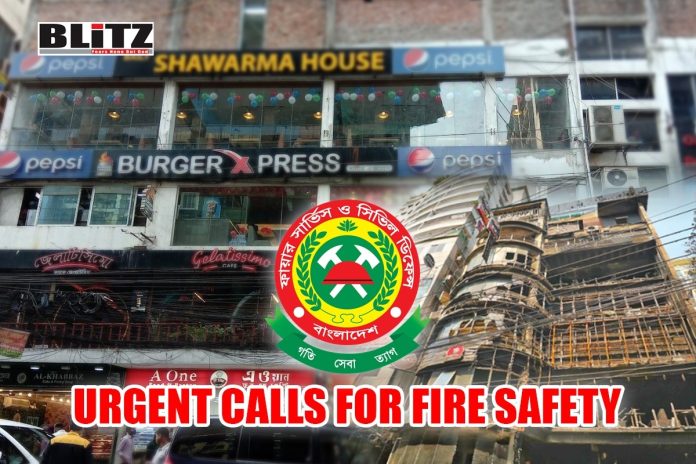In the sprawling metropolis of Dhaka, the specter of fire safety looms large over the towering high-rise buildings that dominate the skyline. Recent tragedies and systemic failures have underscored the urgent need for comprehensive reform to mitigate risks and protect the lives of city dwellers. Despite existing regulations, a convoluted landscape of conflicting definitions and lax enforcement has created a breeding ground for negligence and exploitation among building owners.
At the heart of the issue lies a fundamental discrepancy in the definition of high-rise buildings. While the Building Construction Rules 2008 and the Bangladesh National Building Code delineate high-rise structures as those exceeding 10 storeys or 33 meters in height, the Fire Prevention Act classifies any building with more than six storeys as high-rise. This discordance has profound implications, allowing unscrupulous owners to exploit legal ambiguities and evade essential fire safety measures.
Adil Mohammad Khan, president of the Bangladesh Institute of Planners, highlights the dire consequences of this regulatory disarray. Many mid-sized buildings, ranging from seven to ten storeys, often lack critical safety features such as multiple stairways and fire suppression systems. In the absence of a unified definition, regulatory bodies like Rajdhani Unnayan Kartripakkha (Rajuk) are unable to mandate these vital safeguards, leaving occupants perilously exposed to potential disasters.
The recent Bailey Road fire tragedy serves as a stark reminder of the human cost of regulatory laxity. With inadequate fire safety provisions, including just one stairway, the building became a death trap for its occupants, claiming the lives of 46 individuals. Such incidents underscore the urgent need for decisive action to rectify regulatory shortcomings and prevent future catastrophes.
In neighborhoods like Dhanmondi, Gulshan, Banani, Uttara and Khilgaon, numerous buildings exceeding six storeys operate with only one stairway, blatantly flouting safety regulations. Previously, Rajuk recognized buildings above six storeys as high-rise, indicating a departure from current regulatory standards. This inconsistency not only compromises safety but also undermines public trust in regulatory institutions tasked with safeguarding lives and property.
Lt Col Mohammad Tajul Islam Chowdhury, director (operations) at the fire service, laments the pervasive culture of non-compliance among high-rise building owners. Despite mandatory safety protocols, an estimated 90 percent of residential high-rise owners neglect to implement fire safety measures, prioritizing cost-saving over occupant safety. Even in commercial establishments, where fire safety plans are mandatory, lax enforcement and neglectful ownership prevail, further exacerbating the risk of potential disasters.
Iqbal Habib, vice-president of Bangladesh Paribesh Andolon, elucidates how owners exploit regulatory loopholes to sidestep safety regulations, particularly in commercial-cum-residential buildings like restaurants. The lack of clarity in Rajuk’s definition enables owners to circumvent safety requirements, putting profits ahead of public safety.
Ashraful Islam, chief town planner of Rajuk, acknowledges the administrative inertia hindering regulatory reform, citing bureaucratic hurdles and stakeholder pressure as significant impediments. This inertia perpetuates a culture of non-compliance and exacerbates the risk posed by Dhaka’s burgeoning skyline.
Addressing these systemic failures requires a concerted effort to harmonize definitions and streamline enforcement mechanisms across regulatory frameworks. Clear and consistent criteria for identifying high-rise buildings are essential to ensure uniform compliance with fire safety regulations. Additionally, robust monitoring mechanisms and stringent penalties for non-compliance are necessary to incentivize adherence to safety standards.
Furthermore, public awareness campaigns and streamlined bureaucratic procedures can mitigate the reluctance among building owners to seek necessary approvals. By fostering a culture of accountability and prioritizing public safety over profit margins, Dhaka can navigate its vertical expansion without compromising the well-being of its residents.
The imperative to reform fire safety regulations in high-rise buildings demands decisive action from regulatory authorities, building owners, and civil society stakeholders alike. Only through collective effort and unwavering commitment to safety can Dhaka’s skyline truly rise above the shadows of negligence and exploitation, safeguarding the lives and livelihoods of its residents for generations to come.




